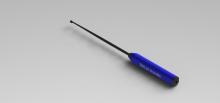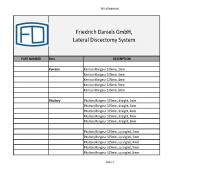
Lateral Discectomy System
Traditional posterior fusion techniques require the dissection and retraction of back muscles, bones, vessels, ligaments, and nerves; whereas traditional anterior approaches through the abdominal musculature risk injury to major vascular structures such as the aorta and iliac vessels, as well as the very delicate genitourinary structures. The lateral transpsoas approach enables the means to reproducibly address spinal pathology from the side of the patient, (utilizing novel dynamic real-time nerve localizing and monitoring techniques, thus minimizing surrounding tissue trauma and maximizing safety and efficacy. Lumbar interbody fusions attempt to eliminate the instability caused by degenerated discs and facet joints that result in vertebral slippage, loss of natural disc height, and pinching of the traversing spinal nerve roots. The direct lateral approach enables liberal access to these disc spaces, thus permitting the placement of extremely large interbody implants that indirectly restore natural disc height and decompress the spinal nerve roots via ligamentotaxy.




